Is It Safe to Travel to India Right Now? A Must-Read Guide for Families
Planning a trip to India with kids in 2025?
And grappling with the usual parental FOMO:
‘Is it safe? Is it clean? Will my kids be overwhelmed… or worse, get a tummy bug?’
You’re not alone; we all go through this whenever we plan our trip to India—nervous, excited, and completely unprepared.
From the deserts of Rajasthan to the peaks of the Himalayas, we’ve explored India with backpacks full of diapers, snacks, and just enough courage to get through the day.
Those early travel moments—messy, magical, and unforgettable—are exactly why we created this guide.
It’s honest, practical, and a bit lengthy (we know!)—but it’s everything we wish someone had handed us before our first trip to India with kids. We hope it helps you plan smarter, travel safer, and experience India in the most meaningful way with your little ones.
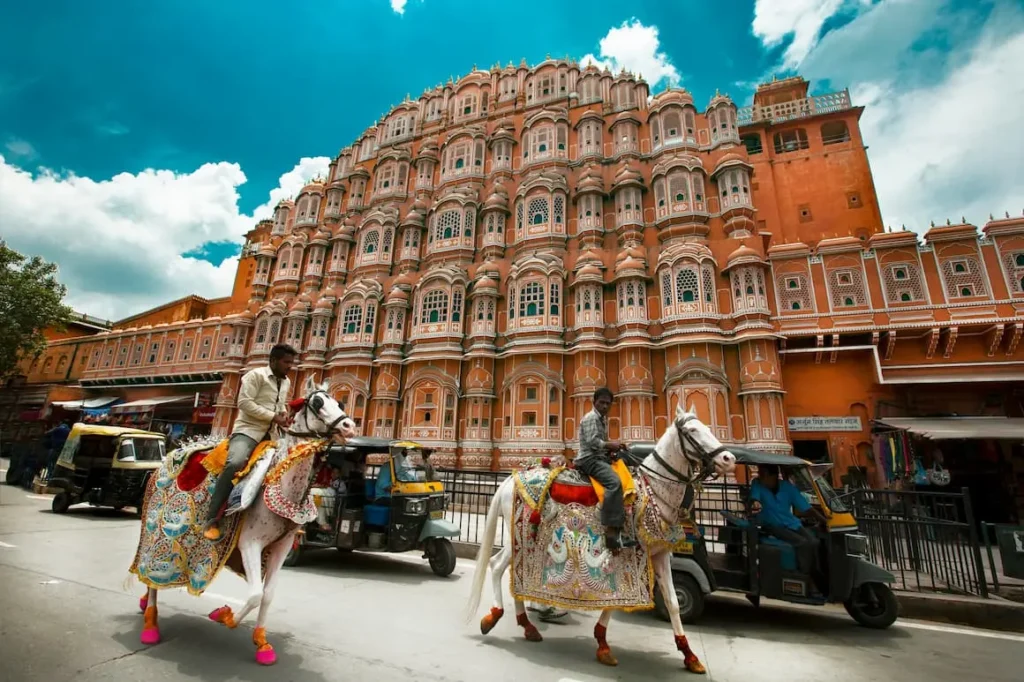
Let’s keep it real—India is intense.
Yes, especially while travelling in the northern part of the country. The colors, the food, the honking traffic (and yes, the cows)—it can all feel like a lot when you’re traveling with little kids. But the right prep and a flexible mindset can save you from extinction; you can do it with ease and confidence.
And trust us—India has a magic of its own. Despite the chaos, the crowds, and the unexpected, it’s one of the most vibrant, soul-stirring places in Asia to explore as a family. So much so that once won’t feel like enough—you’ll want to come back again, just like we did.
We put this beginner’s guide together after exploring India both as a couple and later with our little one. Now, it’s your turn to introduce your kids to incredible temples, vibrant culture, and the breathtaking Taj Mahal (yes, it’s as majestic as they say).
We’re sharing here the highs, the hiccups, and all the in-between moments—the kind of real, practical advice we wish someone had given us before we landed in Delhi with a baby and backpacks.
- Tips for food safety, hygiene, and choosing family-friendly places to stay (India has some truly magical stays!)
- Simple ways to gently ease your kids—and yourself—into India’s sensory overload?
- How can you easily navigate the chaotic streets and crowds in India?
- Conscious travel insights to help your family experience India with respect, joy, and curiosity.
From the royal palaces of Rajasthan to the peaceful backwaters of Kerala, India offers family experiences you simply won’t find anywhere else.
Yes, the cities can be chaotic, and the pace overwhelming at times—but with a bit of planning and awareness, that chaos turns into magic. It becomes a place where your kids can learn, explore, and grow in ways no other destination quite offers.
But first, let’s get real about India’s safety landscape, so your family trip is smooth, smart, and worth every mile.
Ready to explore India like thoughtful travelers, with kids in tow? Let’s dive in.
Current safety status for Visiting India with Kids (2025)
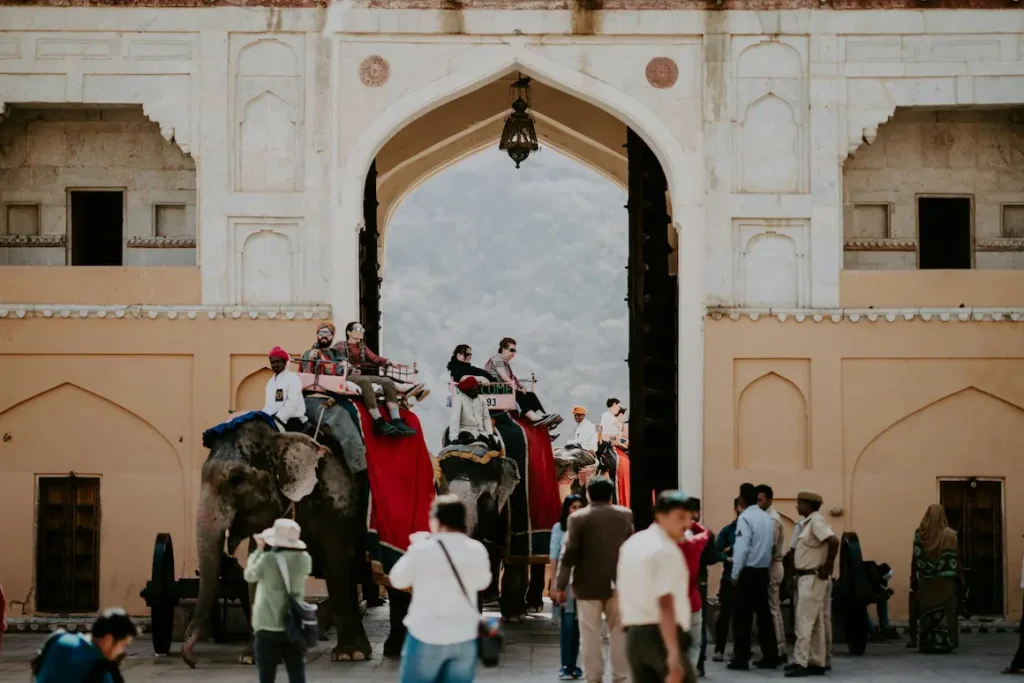
India is, overall, a warm and welcoming place for families, especially in popular tourist areas, where you’ll notice tight security in place. But like any international trip, it’s important to stay informed and aware of your government’s latest travel advice before departure.
Are there any parts of India you should avoid with kids?
Yes—and not because India isn’t safe, but because it’s vast and dynamic, with some areas experiencing ongoing sensitivities.
Most international advisories (including the US, UK, Canada, and Australia) recommend avoiding:
- Jammu & Kashmir (except Ladakh) – While stunning and culturally rich, parts of Jammu & Kashmir can be politically unstable. However, Ladakh is an exception—safe, serene, and one of the best places in India to introduce the grandeur of the Himalayas with a cold desert and snow leopards to your little ones.
- India–Pakistan border areas – These zones are typically high-security and best skipped, except for the Wagah Border Ceremony near Amritsar, which is well-organized and quite the spectacle for families.
- Parts of Northeast India, like Manipur – Some states occasionally face civil unrest, making them less ideal for a relaxed family trip.
Before you finalize your Indian itinerary, take a moment to visit your country’s official travel advisory site. It’s a small but important step to ensure your family’s journey through India stays smooth, secure, and full of great memories.
Thoughtful Travel Tip: India has more than enough safe, beautiful, and kid-friendly destinations—from the peaceful beaches of Goa and Lakshadweep to the grand forts of Rajasthan and the lush hills of Kerala. With a little conscious planning, you can explore India comfortably and meaningfully and introduce a new world to your kids.
What’s the Current Safety Situation in India?

India is totally safe for travelers, especially in major tourist cities and popular regions. As of 2025, there are no major advisories beyond a few restricted border areas (which most tourists don’t visit anyway).
That said, India can feel intense at first—the crowds, the traffic, the sheer energy of it all. But with smart planning, well-reviewed stays, and a flexible mindset, you’ll settle in quickly.
Locals in India are incredibly warm, especially towards your kids. With a few basic precautions, your trip to India with kids can be safe, smooth, and truly unforgettable.
What’s the Safest Region in India for Foreign Tourists?
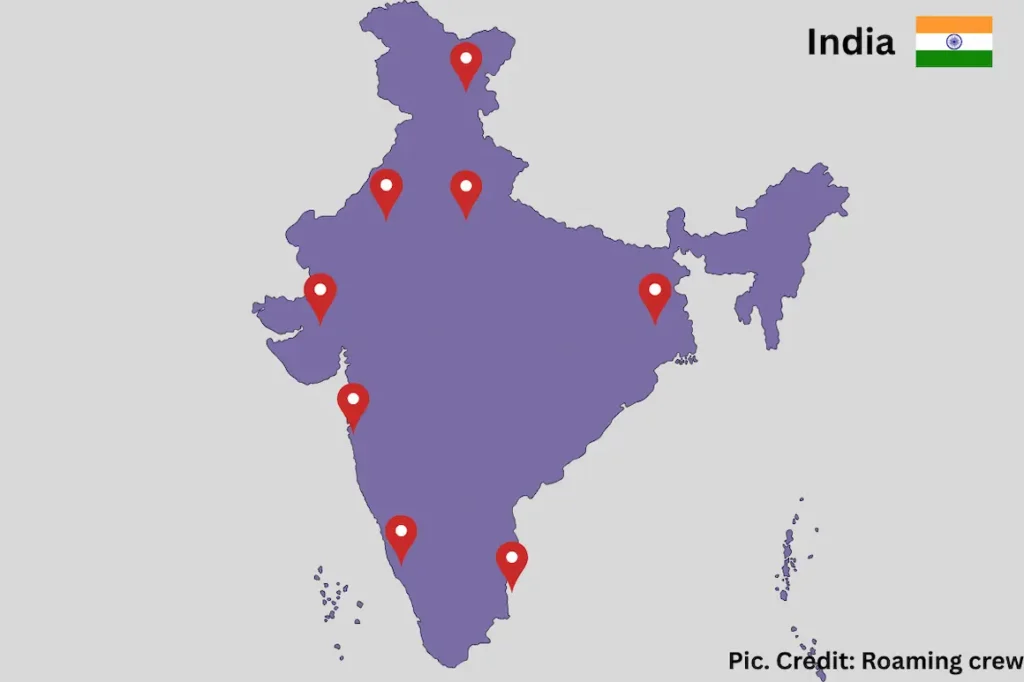
Where you go in India really makes all the difference—because India isn’t just one place, it’s a whole world in itself.
Most tourist regions, from the Golden Triangle in the north to the beaches in the south and even the remote Himalayas, are generally safe for families.
But from our experience, North Indian cities like Delhi or Agra can feel a lot more crowded and chaotic—especially at first.
The pace is fast, the energy is high, and it can be a lot to take in with young kids.
On the other side, places like Kerala and Pondicherry in the South felt much more relaxed and manageable.
People were calm, the vibe was slower, and navigating with a toddler was way easier.
So if it’s your first time, choose a region that eases you in. It’ll make your trip smoother, safer, and much more enjoyable as a family.
Now, if you’re ready to introduce your kids to India’s incredible culture, rich history, and the majestic Taj Mahal, first things first: get that visa!
It’s your family’s ticket into the chaos, color, and charm of this unforgettable country.
Getting a Visa for India with Kids? Super Simple.
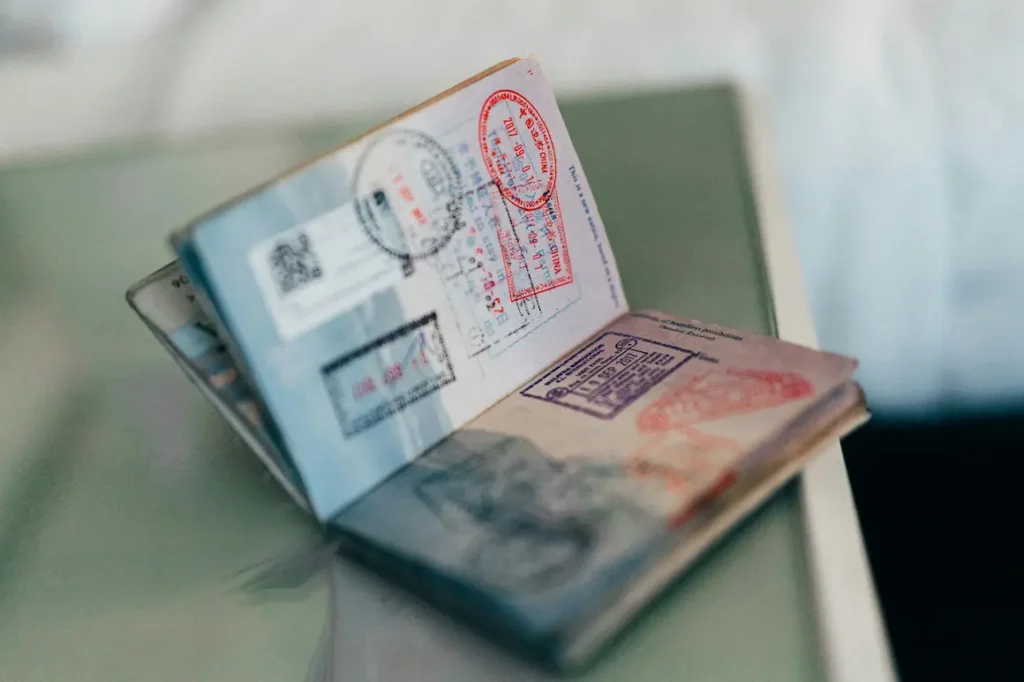
India’s e-visa process is quick and simple. You can apply online here – for yourself and your kids (yes, each person needs their own visa). Choose from a month, year, or 5-year options, and you’ll usually get it by email within a few days.
Just print a copy and carry it with you everywhere, you’ll need it at hotels and sometimes at historical sites too. Make sure your passports are valid for at least 6 months before you apply for the Indian family Visa.
Now, You have got your visa sorted?
Great—now let’s talk timing, because when you go makes all the difference with kids in tow.
When’s the Best Time to Visit India with Kids?
October to March (winter) is hands down the best time. The weather is mild, dry, and perfect for exploring family favorites like the Golden Triangle, Rajasthan, Kerala, Goa, and the salt deserts of Kutch (the most amazing festival to immerse yourself in Indian culture).
Summer (April–June) gets seriously hot, but if you’re visiting then, head to hill stations like Shimla, Manali, or Dharamshala for cooler temps and fresh mountain air.
Monsoon (July–September) brings lush greenery, especially in South India, but also heavy rain. It’s doable—but expect delays. Ladakh and parts of Rajasthan stay dry and are great picks during this time.
Pro tip: For your first trip, stick to the cooler, dry winter months—they’re the most comfortable and kid-friendly. Now that you know when to go, let’s talk about how to go safely.
From food choices to street smarts, these are the things we wish we’d known before our first India trip with little ones—we could’ve skipped that week-long upset stomach hits on the overnight train to Udaipur!
It’s a bit of a list, so grab your coffee and dive in— as the right prep makes all the difference.
General Safety Tips for Families Visiting India with young kids.
India is going to be an incredible adventure for your family—but it’s not always easy, especially with kids in tow.
From navigating noisy streets to figuring out food and transport, the small things matter.
The key?
Being prepared, staying flexible, and knowing a few tried-and-tested tips that actually work on the ground.
Let’s get into the practical stuff we wish we knew on our first trip with our toddler. Here are general tips to help you explore India with more confidence, joy, and fewer meltdowns:
1. Stay Alert in Crowds
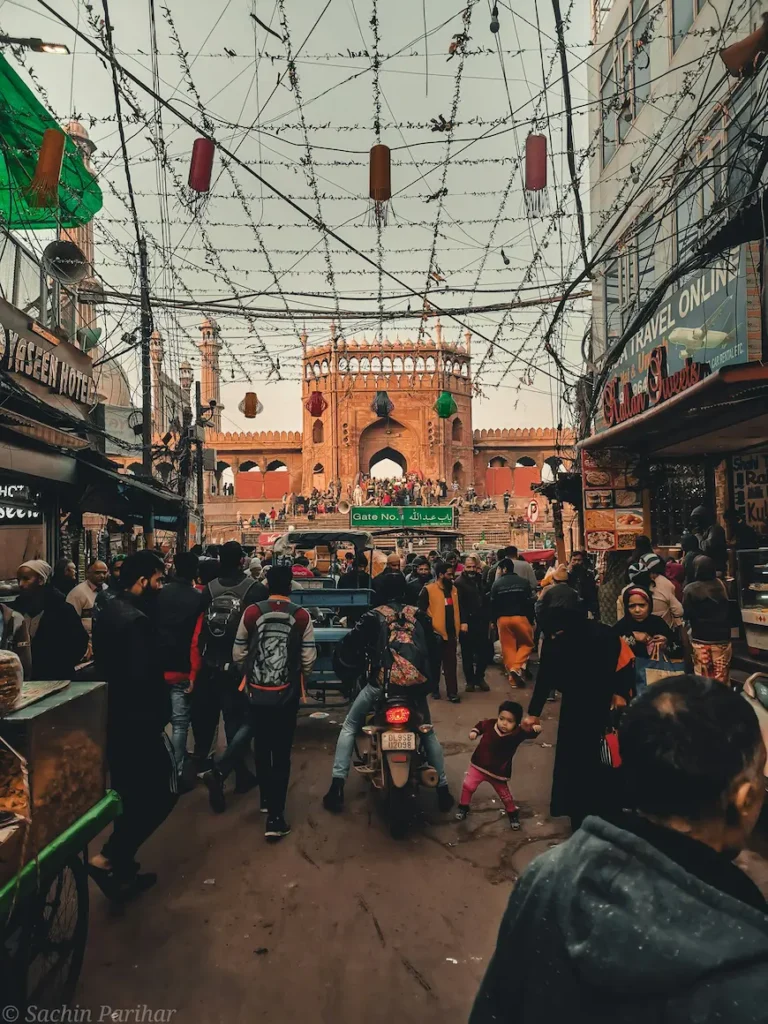
Crowds are part of your India’s travelling experience—especially in big cities, local markets, train stations, and at must-see spots like the Taj Mahal. After all, you’re in the most populous country on the planet!
As mentioned earlier, North India often feels more intense—louder, busier, and faster-paced—especially compared to the calmer south or peaceful hill towns. You’ll feel it the moment you land.
So what’s the simple rule for traveling in India with kids?
Hold their hands. Keep bags zipped. Stay calm and confident.
Yes, you’ll attract attention—but a warm smile and a firm “No, thank you” work wonders with vendors or selfie-seekers. Families, especially with little ones, are often met with curiosity, not hostility. It’s just part of the experience.
At popular tourist spots, a little extra preparation goes a long way:
- Put ID bracelets or name tags on younger kids
- Set a meeting point ahead of time (security lines are often split by gender)
These tiny steps bring big peace of mind—and help you move through even the busiest spots on your own terms.
2. Allow for Delays (Yes, Traffic is That Real)

Let’s talk traffic—because in cities like Delhi, Mumbai, or Bengaluru, it’s a whole experience. Honking scooters, endless signals, and gridlocks are just part of the landscape. Even a short ride can take twice as long as expected.
The key? Don’t rush. Don’t stress. Kids sense your energy, and trying to hustle them through traffic delays never ends well.
- Use Google Maps for time estimates—it’s surprisingly accurate in Indian cities.
- Avoid rush hours (8–10 AM and 5–8 PM), especially near business districts and tourist sites.
- In tourist-heavy spots like Agra, Kerala, or Goa, traffic is easier to manage—it’s more of a seasonal crowd than a daily grind.
Parent hack: Always keep a few quiet games, downloaded shows, or card games handy for the kids. And if you’re booking a cab, go with Uber or Ola—they’re safe, affordable, and let you track your route easily.
Thoughtful tip: Be patient with your driver—many are navigating tough conditions for hours. A smile and kindness go a long way.
3. Don’t Fall for Common Tourist Scams
Yes, scams in India are real, especially in places like Delhi, Agra, and Jaipur (the famous Golden Triangle). We’ve seen it all—from overpriced tuk-tuk rides to “official” guides who aren’t official, or overly pushy vendors chasing us down the street. But the good news? Most of it is easy to avoid with a little awareness and a “strict No”.
We always prebook transportation and tours through our hotel or a trusted agency. In most of the Indian cities, Uber or Ola is a lifesaver—no haggling, no confusion. Honestly, for your first trip with kids, a well-reviewed tour package can take a lot of the pressure off.
Be polite but firm with persistent sellers or “helpful” strangers at ATMs and tourist sites. If it sounds too good to be true, it probably is. Just smile, say “No, thank you,” and walk away.
At big landmarks like the Taj Mahal or Red Fort, fake guides can seem incredibly convincing. Do a quick bit of research before you go, book official guides if you want one, or be like us and use a pre-downloaded audio guide. It keeps things simple and scam-free.
4. Hire a Local Guide to navigate easily
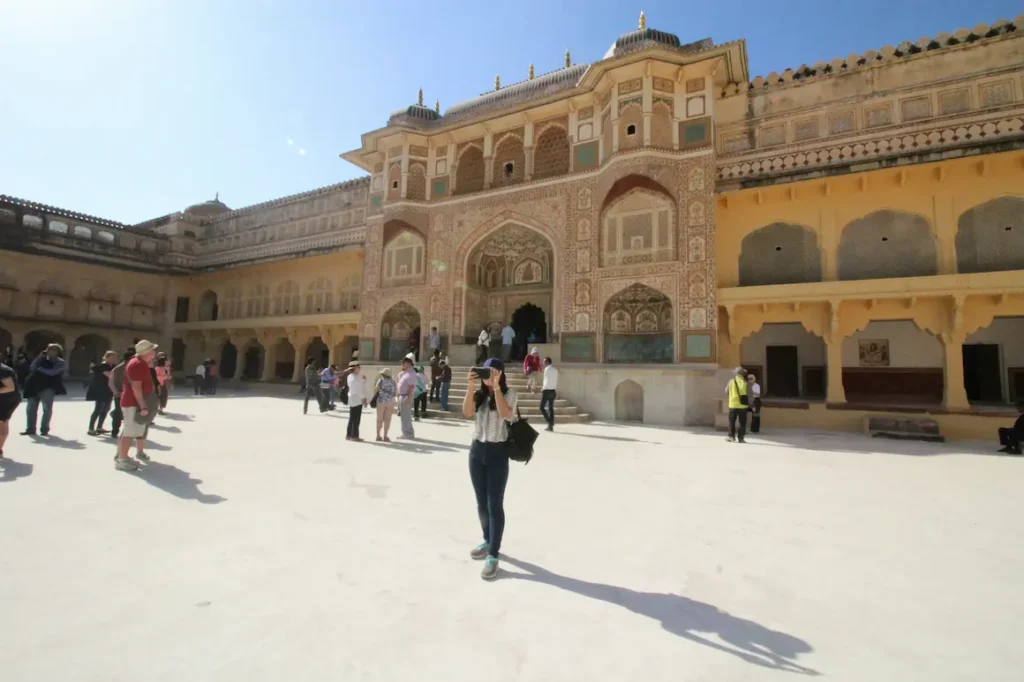
In places like the Taj Mahal, Jaipur’s forts, temples, or the buzzing lanes of Old Delhi, having a great local guide can make all the difference. They don’t just help you navigate the crowds—they bring the history and culture to life in a way that even kids can enjoy.
Ask your hotel or a trusted tour company for a local guide who’s good with families—someone who knows how to keep little ones engaged and understands cultural sensitivities.
One of our favorite memories? A food tour in Old Delhi and Jaipur—fun, flavorful, and completely safe. It was a great way for our kids to explore local flavors (without the stress!)
5. Plan a Slow, Flexible Itinerary
India isn’t the place to check off 10 cities in 10 days—especially with kids in tow. The honking, heat, and crowds can wear everyone down fast (yes, even you!).
Give your family some breathing room. Midday naps, hotel pool time, or a quiet hour to just play or wander—these little breaks make all the difference. They help manage jet lag, avoid meltdowns, and give wiggle-room for those spontaneous, magical moments.
For your first trip, fewer destinations and longer stays are the way to go. A slower pace helps kids adjust to the sensory overload—and gives you the chance to actually enjoy India, instead of racing through it.
6.See a Doctor Before You Go

Before heading to India, definitely check in with your doctor. India is an incredible country, but it comes with its own set of challenges—crowds, unfamiliar bugs, and food that’s a bit spicier than what the little tummies might bear.
Check the official website for recommended travel vaccines and make sure you’re stocked with your go-to meds. Pack the necessary medications electrolytes, kids’ fever medicine, allergy meds, and loads of hand sanitizer.
Share your itinerary with your doctor so they can recommend vaccines or meds for specific regions (like altitude sickness tablets for Ladakh or anti-malaria meds for tropical areas). A quick visit to your pediatrician can give you peace of mind and help you pack smart.
And what about if someone gets sick on the trip?
Don’t stress—major Indian cities like Delhi, Mumbai, and Bengaluru have plenty of reliable private hospitals, often handling emergencies faster and more responsively than in the West. Just make sure your travel insurance is up to date, and you’re good to go.”
7. Don’t Drink the Tap Water (Seriously)

In most of the developing countries, tap water is a no-go, not even for brushing your teeth-same applies for India. Stick to sealed bottled water or filtered water only, and skip the gargling too, just to be extra safe while using showers in India.
Most hotels provide free purified water bottles, and sealed bottles are easy to find at shops and stalls. When heading out, carry a refillable bottle and fill it only with safe water. Always check that the bottle cap is sealed properly before you sip.
And yes, even one little ice cube can cause a week of trouble. Unless you’re absolutely sure it’s made from clean water (ask, even at nice hotels!), it’s better to pass.
8. Prep Kids for a Culture Shift

From spicy food and barefoot temple visits to curious stares and noisy streets, India can feel like a full-on sensory ride for little ones. The best way to ease them in? Start their journey before you fly.
Watch fun India travel videos together, point out places on the map, or grab an India-themed coloring book. If your child paints the Taj Mahal pink at home, just wait until they see the real one—it’s magic.
And when you’re out exploring, keep walks short and fun. India’s streets can be overwhelming, but tuk-tuks (auto rickshaws) are a lifesaver—safe, exciting for kids, and much easier on little legs.
Now, crack the most common concern as a foreigner in India: How to Dress?
9. How to Dress in India as a Tourist (Especially for Mums)?
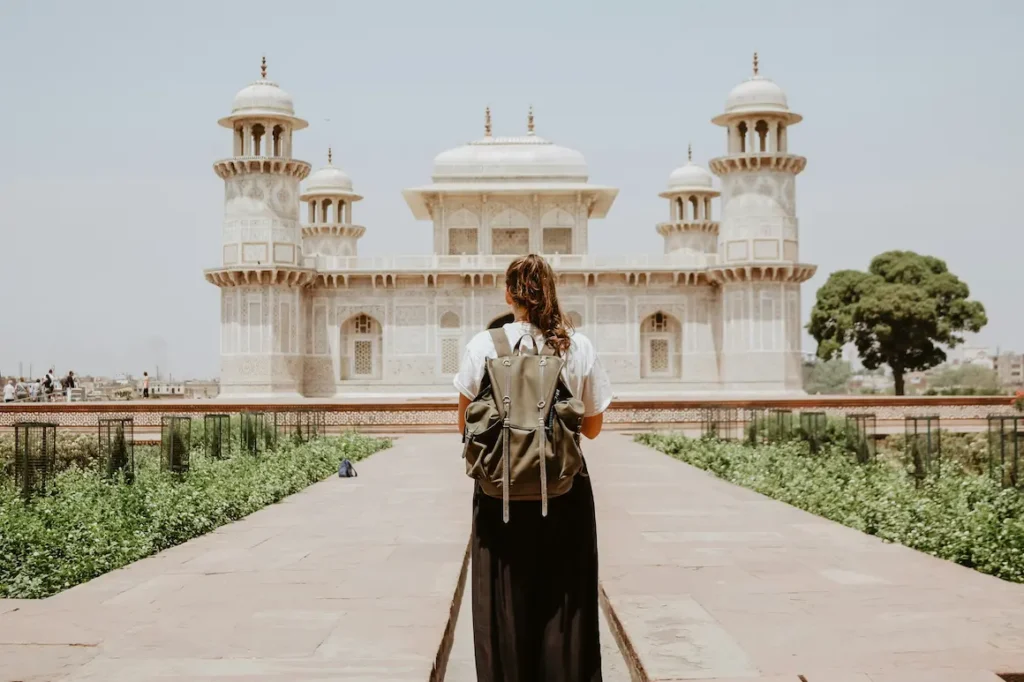
Being a thoughtful traveler in India starts with what you wear—especially when visiting temples, mosques, or other sacred spots. Modesty is key here. Most places expect shoulders and knees to be covered, for both men and women.
For mums, light cotton or linen pants paired with shoulder-covering tees or tunics work perfectly—they’re breathable for the heat and respectful of local norms. Avoid short shorts or skimpy tops, especially in crowded areas, as they can draw unnecessary attention. If you’re packing a bikini, that’s totally fine—but keep it for the beach (even in Goa). A soft cover-up or light pullover is great to throw on when leaving the beach.
Always keep a lightweight scarf or coverup in your day bag—it’s super handy for spontaneous temple stops or covering your head if needed.
Dress your kids in comfy, modest clothes too. A simple t-shirt and longer shorts or pants work great, and don’t forget easy slip-on shoes—you’ll be taking them off often at temples and homes.
Also, giving a quick heads-up to kids: temples are quiet, respectful places, not for running or touching everything in sight. A short talk about how others pray and why it matters can make the visit more meaningful for them, too.
Pro Tip: Pack an extra pair of socks in your day bag. Temple floors can be hot, rough, or sticky, and socks will save those little feet during barefoot walks.
10. Is it safe to eat street food in India, especially for kids?
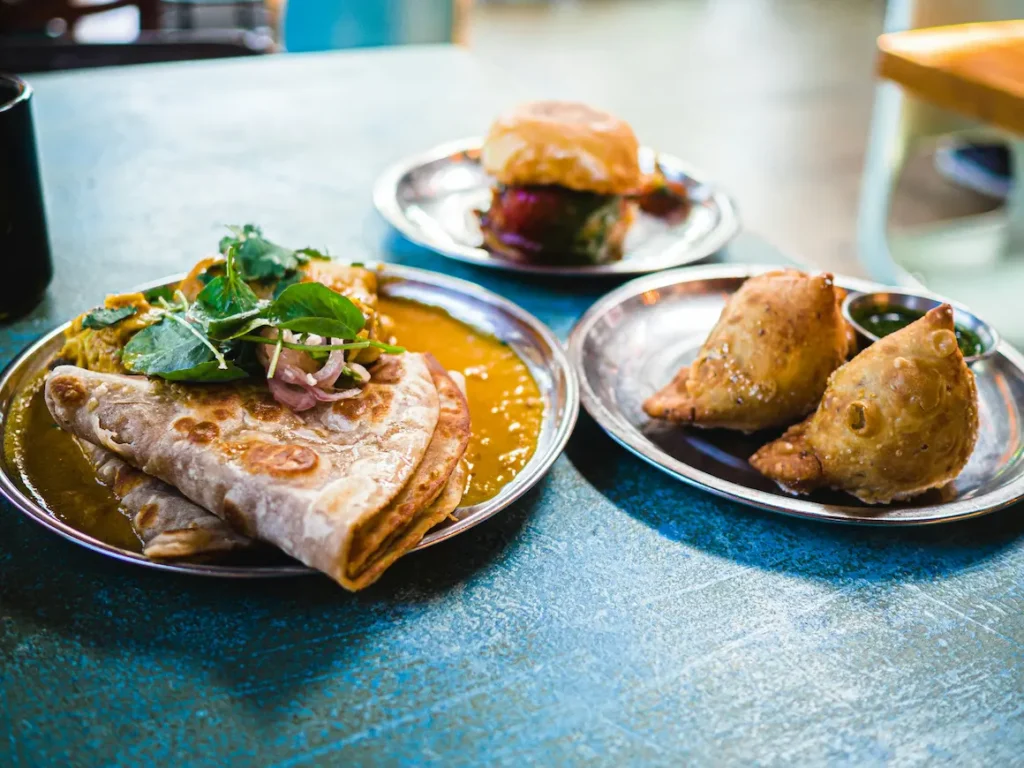
Indian food is bold, rich, and full of flavor—but for little tummies (and yours too), it can be a lot at first.
Start slow. In the first few days, go for freshly cooked meals from busy, clean restaurants. Skip raw salads, unpeeled fruits, and anything from street stalls—unless you’re completely sure it’s hygienic.
Ease into local flavors with plain rice, soft naan, dal (lentils), boiled veggies, and bananas. Most tourist-friendly places will gladly adjust the spice level if you ask for mild or non-spicy.
Need a break? Starbucks, McDonald’s, and Domino’s are everywhere in big cities and malls—great for quick comfort meals and clean restrooms. And if you want to try Indian street food safely, check out Haldiram’s or Bikanervala—these popular chains serve clean, tasty versions of classic dishes, and you’ll even spot them at highway stops.
Pro tip: A guided food tour in places like Old Delhi or Jaipur is a fun, safe way to try Indian snacks without the stress of guesswork. Random street stalls? Best to skip them—Delhi Belly isn’t worth the risk. If you feel queasy after eating, drink a Coke—some travelers swear it helps with digestion!
Fun fact: In India, a roadside “hotel” often just means it’s a restaurant, not a place to stay!
11. Go for backpacks then strollers

On Indian roads, strollers are more hassle than a help. Think bumpy sidewalks, narrow lanes, and the occasional cow in your path (yes, really!).
A baby carrier or a comfy hiking backpack works so much better, especially in crowded places like markets or forts. It keeps your hands free, your little one close, and lets you move around without constantly getting stuck. Trust us—you won’t miss the wheels.
12. Always Carry Small Cash
ATMs work just fine in most Indian cities, but cash is still the go-to for small transactions—like tuk-tuks, street snacks, or tipping hotel staff. Keep a stash of ₹50 and ₹100 notes handy. Avoid big bills; most small vendors won’t have change.
Pro Tip: Having small cash ready saves you time, avoids awkward waits for change, and keeps things smooth, especially when you’re juggling tired or hungry kids in a busy spot.
13. Say “No, Thank You” to unlimited Selfie Requests in India
In India, people are warm and curious, especially around foreign families with kids. Don’t be surprised if someone politely asks for a selfie at popular tourist spots. It’s common, and usually harmless, but sometimes creates chaos around you.
That said, you’re never obligated. If it doesn’t feel right, just smile and say, “No, thank you.” Most people will back off respectfully. Your child’s comfort always comes first—and that’s perfectly okay.
14. Be Kind, But Don’t Buy from Chasing Vendors
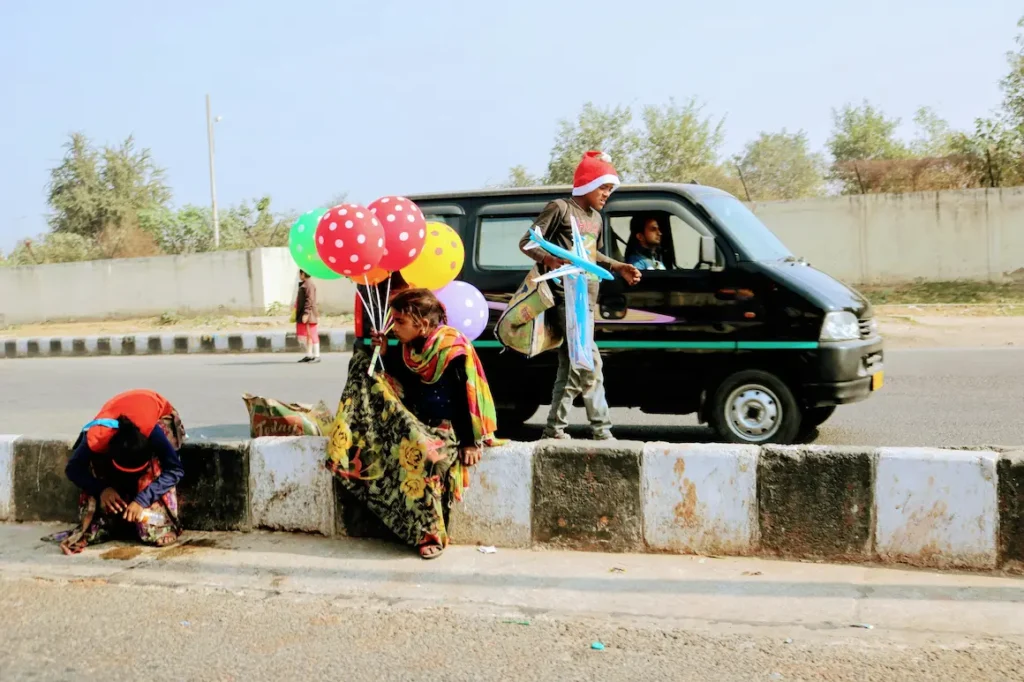
It’s very common to be approached by street vendors in India—mostly even women and kids—near tourist spots or road crossings in India. We get it—it can feel tough to say no. But buying out of guilt or pressure can unintentionally encourage street selling, and in some cases, support child labor, which sadly still exists in parts of India.
When you do want to shop, head to local markets, artisan stores, or vendors recommended by your hotel or guide. That way, your money goes toward truly supporting local communities and crafts.
Pro Tip: Instead of giving money to kids on the street, ask your hotel about trusted NGOs or education initiatives doing real grassroots work.
We once visited a roadside learning center for kids in Delhi, suggested by our hotel, and it was honestly one of the most touching experiences of our trip.
Thoughtful choices like these leave a deeper impression—not just on the places you visit, but on your own kids, too.
15. Your Stay Matters More Than You Think
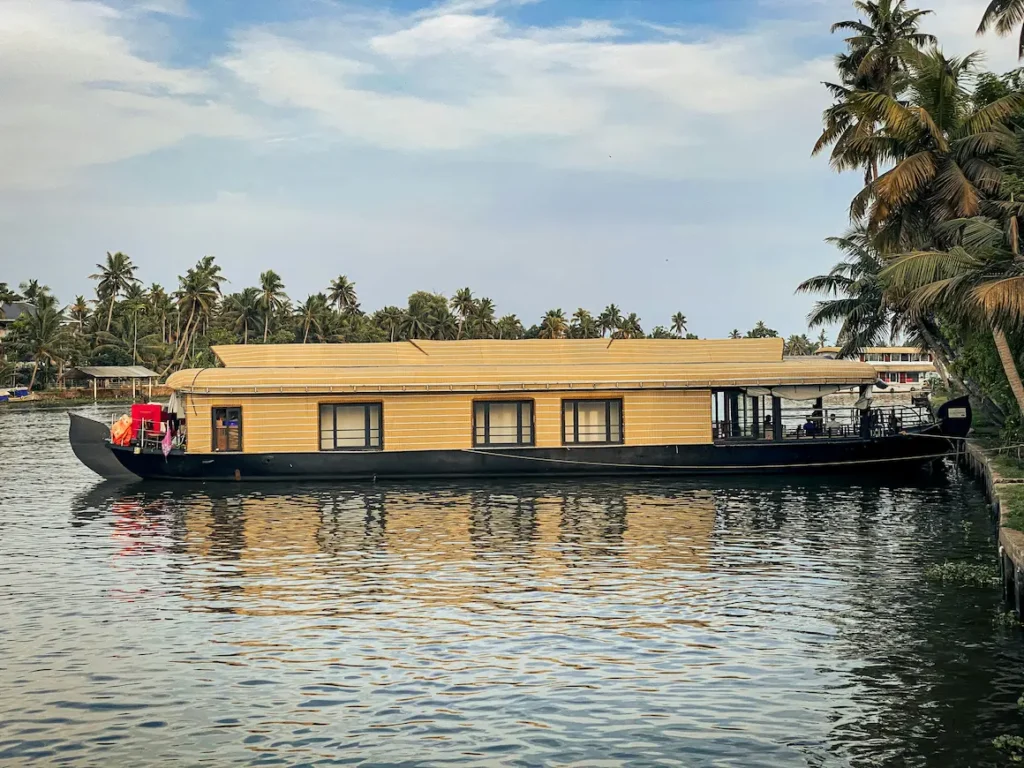
In a country as vibrant (and obviously, Intense) as India, where you stay can truly shape your whole experience, especially with little ones in tow. It’s not just a place to sleep—it’s your reset zone, your safe space to unwind after the beautiful chaos of India.
From family-friendly homestays to luxury hotels, there’s something for every budget in all the major tourist cities. But here’s a tip we learned the hard way: don’t rely solely on Google reviews.
As it’s not uncommon for businesses to ask (or pressure) guests to leave 5-star ratings, even if the service didn’t quite deserve it.
Pro Tip: Always call or message the property directly before booking your stays in India to confirm essentials like a crib (rare in mid-range hotels), extra bedding ( easily available), early check-in, or allergy-friendly meals.
After a long day out, there’s nothing better than walking into a stay that’s already thought of your family’s needs.
16. Our Favorite Family Stays in India as a family.
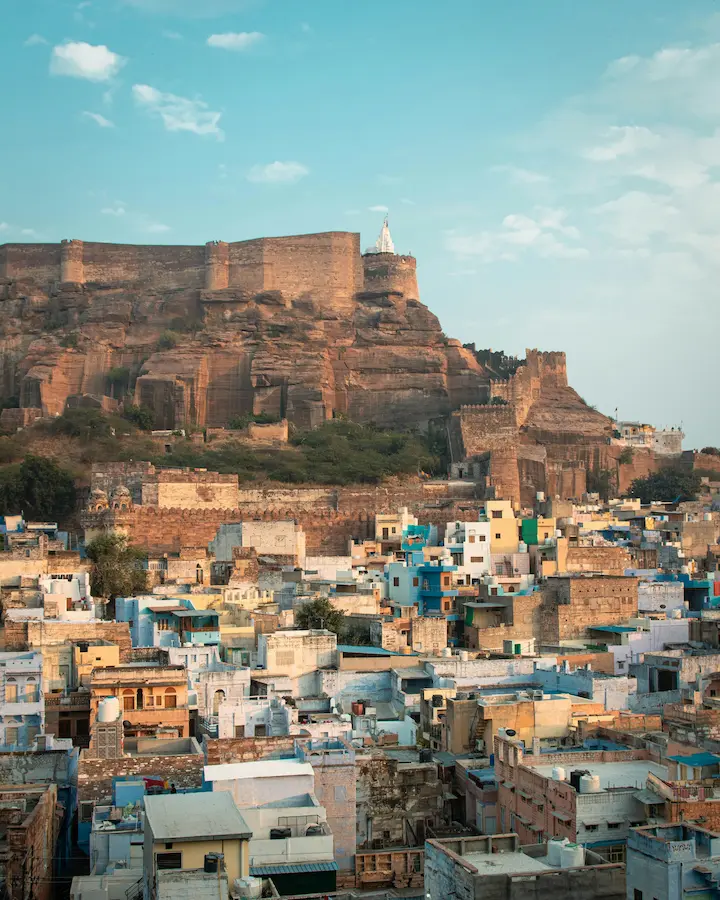
We always try to stay close to the city center or main attractions, as nothing tests our patience like being stuck in traffic with cranky kids in the backseat.
One of our most memorable stays? A 500-year-old haveli in Jodhpur with a magical sunset terrace overlooking the fort. Our kids spent hours pretending it was their royal palace!
Also, a beautiful day spent on a houseboat stay (highly recommended in Kerala)—a peaceful floating hotel that was a total game-changer after long road trips.
When booking, we always look for easily accessible, good family reviews, and a breakfast included, because getting food into little bellies early makes everything smoother. A pool or a small play area is a huge bonus when you just need downtime without planning a thing.
Plug Reminder: India uses plug types C, D, and M (round pins) with 230V. Most hotels have 2- or 3-pin sockets, but it’s smart to bring a universal adapter—especially one with round-pin support—for easy charging on the go.
Pro Tip: Check out Homestays of India. We found our Ladakh homestay through them, run by the sweetest elderly couple in a tucked-away Himalayan village. It felt like staying with extended family, and our kids still talk about it.
17. Stay Clear of Street Animals
In India, cows, monkeys, and stray dogs are everywhere—you’ll spot them lounging near temples, wandering in markets, or casually crossing busy streets. While it’s definitely a fun sight for kids, remind them not to pet, feed, or go too close.
Some animals, especially monkeys or dogs, can be unpredictable, and in cases, may carry diseases like rabies. We always tell our kids to enjoy watching from a distance. If you’re heading to places like hill stations or forts (where monkeys love to hang out), keep snacks tucked away and bags zipped—they’re clever little snack thieves!
Pro Tip: Keep a small first-aid kit and hand sanitizer in your day bag—just in case of minor scrapes or surprise situations
18. Watch for Mosquitoes—and Cow Poo
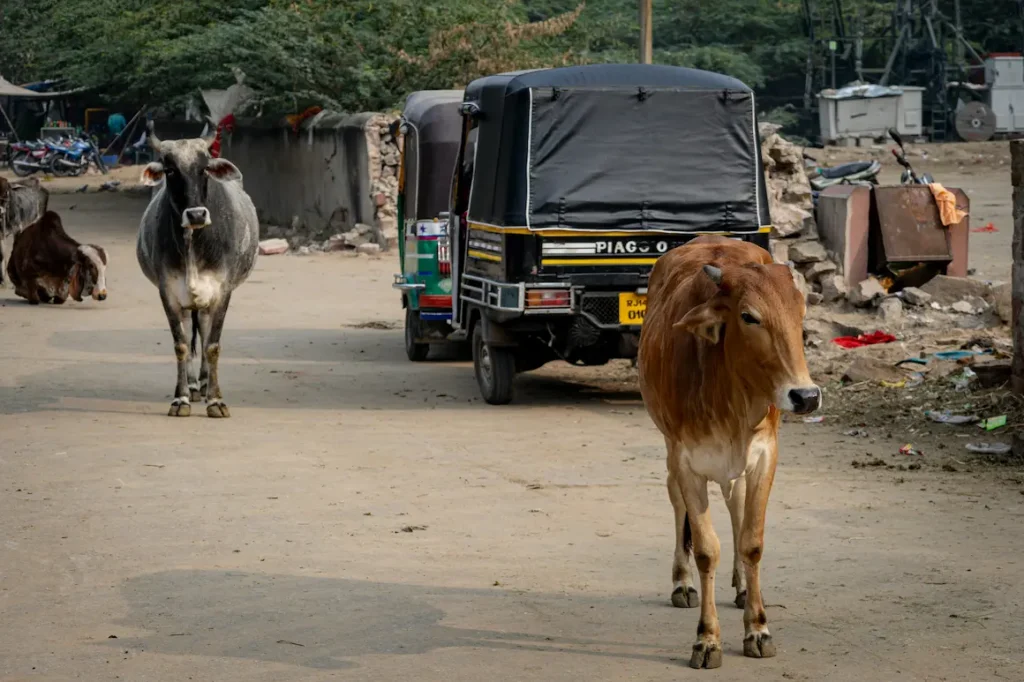
Yep, both mosquito bites and cow poop are part of the real India experience—and totally avoidable with a little prep!
Carry a good mosquito repellent (we like Odomos—it’s easy to find in local pharmacies here), and ask your hotel if they provide mosquito nets or vaporizers—most decent stays will.
In the evenings, dress kids (and yourself) in lightweight full sleeves and pants to keep bites at bay.
As for the streets—keep an eye out for cow droppings, especially around temples and markets. Cows are sacred, but their leftovers… not so much. We’ve learned the hard way that a distracted toddler and a cow-pat don’t mix well—watch those little feet!
Pro Tip: Flies love open street food, especially in the warmer parts of India. Stick to busy, clean places, and skip anything sitting out uncovered.
19. Roads in India: Honks, Cows & Chaos
Let’s be honest— The highways or outer circle roads are smooth, but the streets in India are a sensory adventure all on their own. You’ll find honking tuk-tuks, scooters weaving through traffic, potholes, and yes, even cows casually lounging in the middle of the street.
Walking with kids can be tricky, especially where sidewalks are uneven or just don’t exist. Crossing the street?
It takes a bit of nerve! Crosswalks are rare, so do what locals do—make eye contact with oncoming drivers, raise your hand confidently, and walk slowly but steadily.
Don’t run—just keep your pace, best to avoid any random scratch. When in doubt, follow a local across.
Tuk-tuks (autos) are a fun and faster way to get around nearby. Our little one loved every bumpy minute of it.
For the longer rides, obviously cabs are best just book with a reliable driver—apps like Ola or Uber work well in most Indian cities.
Pro Tip: Car seats and seat belts may not be available, so bring a travel booster if your child needs one. And try to plan outings outside rush hours—morning and evening traffic can get especially intense.
20. Pollution in Big Cities
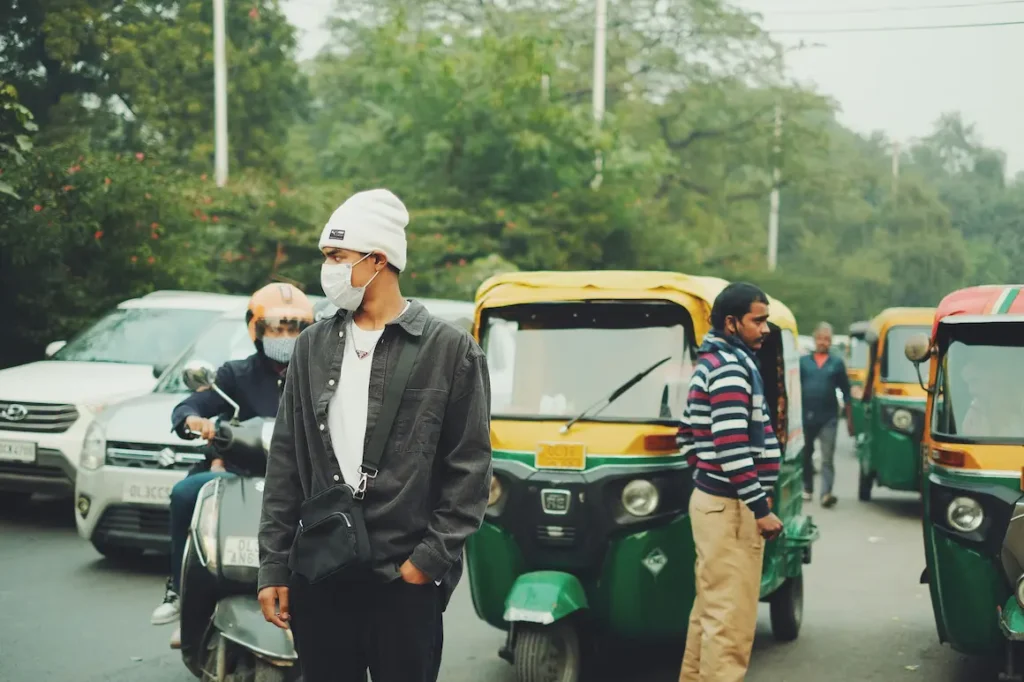
Yes, Pollution is a big problem here, especially the big cities like Delhi, Kolkata, or even Jaipur can have poor air quality, especially during winter months (October to January).
The smog can be heavy, and not suitable for anyone has any respiratory sensitivity, it’s something to plan around.
- Pack N95 masks for everyone—they’re helpful when walking on busy streets or sightseeing outdoors, for North India,( for Delhi).
- Visit during cleaner-air seasons, like late winter (Feb–March) or spring.
- If anyone has respiratory issues, talk to your doctor before the trip and bring all essential medications (inhalers, allergy meds).
- Avoid heavy outdoor activity on days with poor air quality—many apps like AQI India or AirVisual give real-time updates so you can plan your day better.
Pro Tip: Book a stay with air purifiers (confirm it while booking), or carry a small portable one if you’re staying long in metro cities.
21. Do We Need Vaccinations for India, or vaccination certifications?
Not all vaccines are mandatory to enter India, but some are strongly recommended, especially when you’re traveling with kids.
The best move?
Have a doctor’s advice at least 4–6 weeks before departure. They’ll guide you based on your family’s itinerary—whether you’re sticking to cities, exploring rural areas, or doing a bit of both.
Yes, if you take a dose, just have a print with you to help in any emergency.
Pro Tip: Planning wildlife safaris, countryside stays, or food tours? Let your doctor know. A few extra precautions can go a long way in keeping your little ones healthy.
✅ For US travelers: CDC Travel Health – India
✅ For UK travelers: NHS Fit for Travel – India
22. Getting Around India: What Works Best for Families
India is huge—so how you get from point A to B matters, especially with kids in tow.
For long distances (like North to South India), air travel in India is your best bet with kids.
Flights between major cities are affordable and save you tons of travel time. Airports in India are well-equipped with clean washrooms, lounges, and food courts, making the journey much smoother when you’re traveling with little ones.
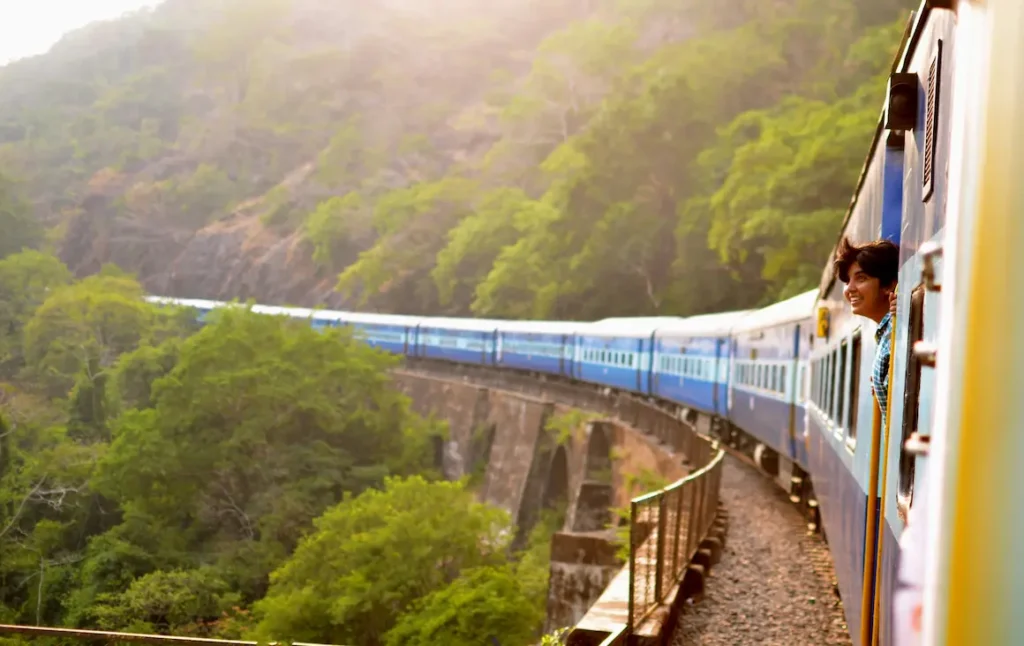
For Short or Overnight Routes? Take the Train.
India’s train network is massive—and for journeys between 3 to 5 hours (or even an overnight trip), trains in India are way more comfortable than buses.
Stick to 1AC or 2AC classes for clean bedding, privacy (curtains or cabins), and extra space to stretch out with kids.
Booking tickets directly on IRCTC can be tricky—it requires registration and doesn’t accept most foreign cards. Instead, use 12Go Asia or Cleartrip for easier bookings on major routes.
Pro tip: Local travel agents can help with short-distance tickets, but seat selection isn’t always guaranteed.
Skip the long-haul buses with kids, even the premium ones. They can be bumpy, unpredictable, and rarely have clean rest stops.
For short trips or intercity travel, a private taxi booked through a reliable tour agency or (Uber intercity) gives you flexibility, comfort, and peace of mind.
Make sure to confirm the price and car type in advance, and check if they provide child car seats(not so common in India).
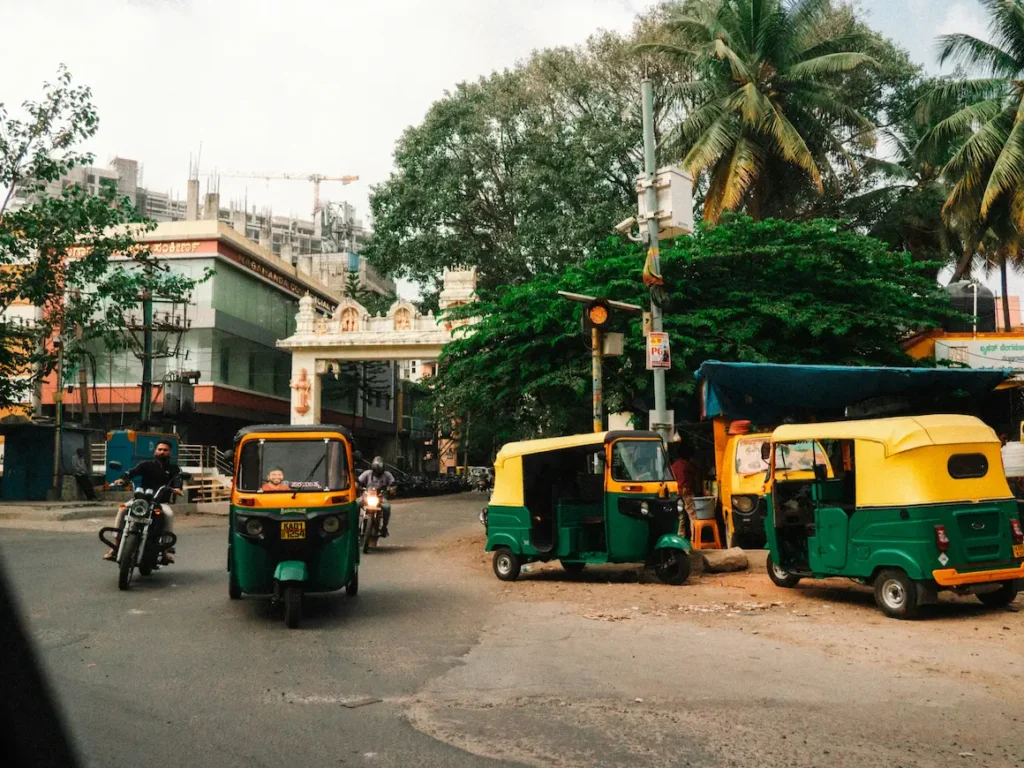
Tuk-Tuks in India for Short Distances
Tuk-tuks (auto-rickshaws) are a fun and practical way to get around for short distances in almost every city in India. Kids love the bumpy rides and open views—and let’s be honest, they make navigating through busy lanes much easier than cars.
Just be sure to agree on a fare before hopping in (unless it’s a metered ride, like in Bangalore or Mumbai). Or use Uber Auto or Ola Auto in cities—they’re app-based, safer, and often cheaper.
23. Keep Your Documents Safe
Crowds can get tight in markets, train stations, or festivals—so it’s best to play it smart. Pickpocketing or even just misplacing something important can cause major stress, especially when you’re juggling kids.
Use a money belt or anti-theft daypack, and keep passports and cash zipped up and close. Avoid carrying too much cash—UPI apps and cards work well across most shops, restaurants, and hotels.
You may be asked to show your passport at hotels or even historical sites in India, so keep a printed copy handy, and store digital backups safely on your phone or email. We also leave physical backups in our main luggage—just in case.
Now, safety’s sorted— let’s hop to the major concern,
what we pack to keep everyone healthy on the go.
Just some tried-and-tested tips from us to you.
How to Avoid Getting Sick in India (Without Stressing)
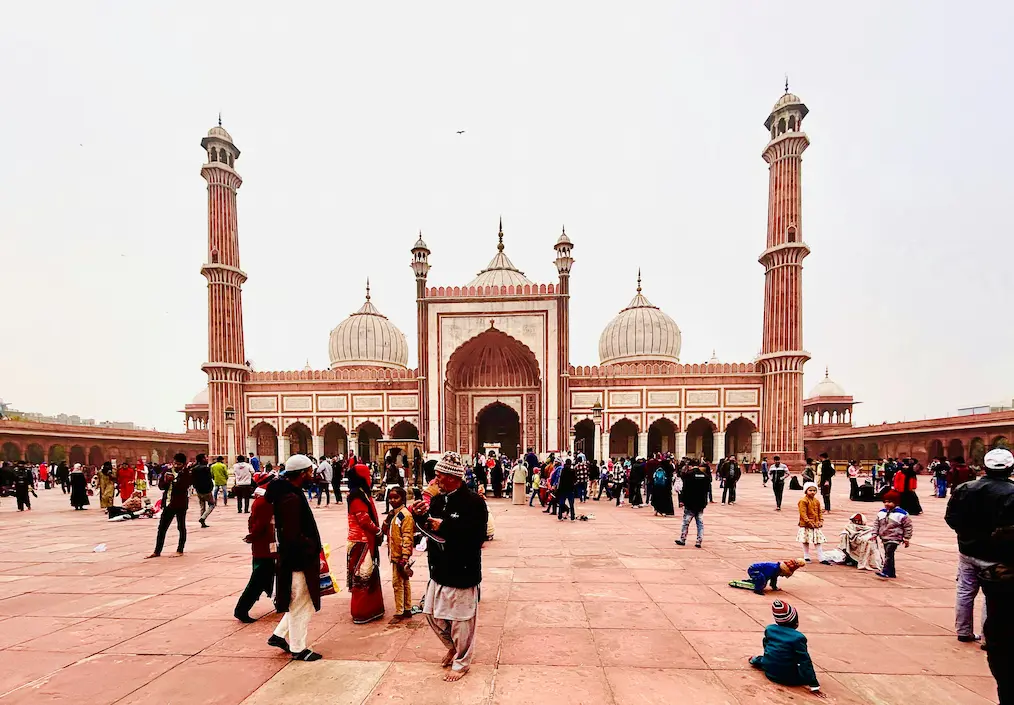
India’s heat, crowds, and bold flavors of street food can be a lot at first—but with a few smart habits, you can keep the whole crew healthy and happy.
Disclaimer: This info is based on personal experience. Always check with your doctor before your trip.
Now, let’s see what worked for us:
- Drink smart: Stick to bottled water (Bisleri, Kinley, Aquafina), check seals, or go for fresh coconut water.
- Pack the Basics: Electrolyte powder, motion sickness meds (like Gravol), Imodium for tummy troubles, and mosquito repellent (DEET-based or Odomos). Forgot something? No stress—Indian pharmacies usually stock all of these without a prescription.
- Snack stash: Bring protein bars and familiar snacks for picky eaters, a lifesaver when local options feel too new.
- Bug protection: Dengue & malaria are seasonal—cover up at dusk and use repellents in evenings.
- Wipes, sanitizer & tissues: Essential for meals, public restrooms, and those endless toddler touches.
- Many public restrooms don’t have toilet paper—pack travel-size tissue packs and hand sanitizer, and be prepared for squat toilets in public restrooms.
- Skip long walks: Use tuk-tuks or Ubers—less sweat, more smiles.
- Masks in cities: Helpful in polluted places like Delhi or Mumbai, or even on dusty streets.
We also carried straws, extra socks, and ORS pouches everywhere—small things that saved us more than once.
You’ve made it this far—so yes, you’re ready to confidently heading to India with your kids!
But before you pack those last snacks and universal chargers, here’s one more thing that made our trip smoother: a few trusty apps.
From booking rides to finding clean food (or diapers!), these digital helpers saved our sanity more than once. With curious little explorers, having the right tools on your phone can seriously make all the difference.
Here are the apps we used—and loved—on the road in India.
Must-Have Apps for Traveling in India with Kids.
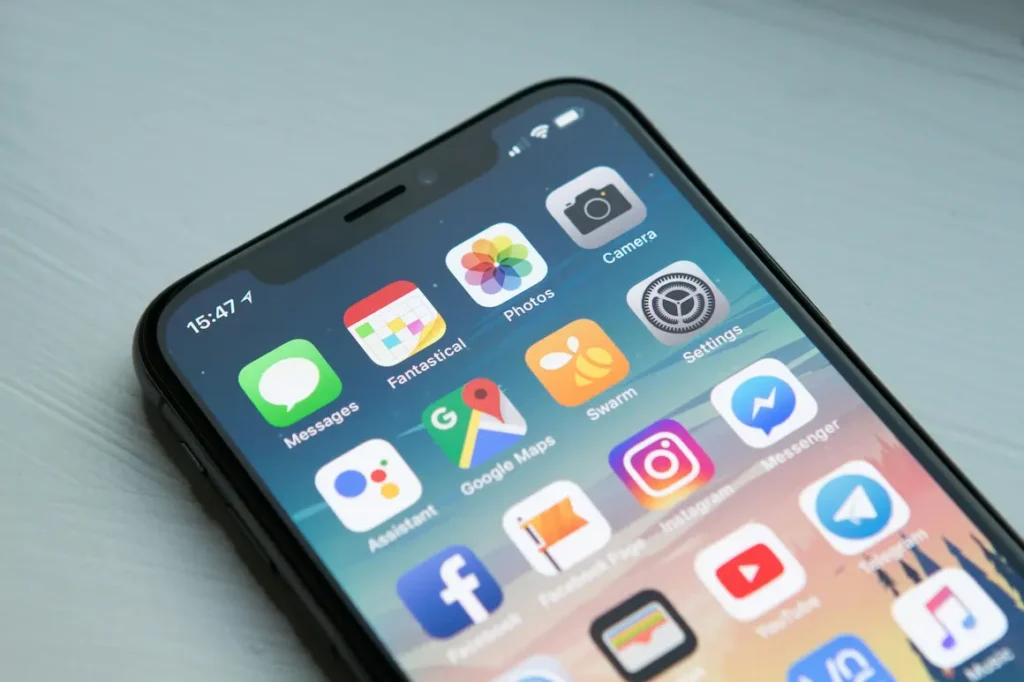
These are the apps that kept you connected, calm, and (mostly) meltdown-free—whether you were tracking down food in a sleepy town, grabbing a tuk-tuk mid-nap, or booking trains last minute.
- Uber & Ola: India’s go-to ride-hailing apps. Skip the street-side negotiations and hop into a safe, metered ride. These apps works almost in every Indian city and best is you can even book your tuk- tuk with Uber too.
Why we love them: Transparent pricing, GPS tracking, and no need to carry exact change. - Google Maps (with Offline Downloads):- Yes, getting a little lost in India can be magical—until your kids are calm and full. Download offline maps for each city ahead of time to explore confidently, even with patchy data. and use it to find clean public toilets, parks, pharmacies, and even kid-approved local eateries nearby.
- Paytm or Google Pay:- Digital wallets are huge in India—even roadside tea stalls accept them. Paytm setup might not work with foreign numbers, so test it before your trip.
- EaseMyTrip & MakeMyTrip:– Trusted Indian travel platforms for booking flights, trains, and family stays. Their customer support is quick, even on international numbers—super helpful when plans change!
- Booking.com:- Still one of the easiest platforms to filter for “kid-friendly,” “pool,” or “breakfast included.” Parent reviews were gold for helping us choose stays that felt safe, clean, and fun.
- Airtel Thanks App:- Planning to get a local SIM (which we recommend)? Airtel has strong coverage, even in hill stations or offbeat towns. Use the app to manage top-ups, track data, or recharge before heading to remote areas.
- XE or Currency Converter Plus: Helps you keep an eye on real-time exchange rates and avoid getting overcharged.
These apps won’t just save you time—they’ll make your family trip smarter, safer, and more culturally connected. With just a little digital prep, you’ll be free to focus on what really matters:
exploring India with your little ones by your side—and soaking up every wow moment together.
Now that you’re packed, prepped, and digitally ready… there’s just one thing left—
Where exactly should you go in India with kids?
We’re working on a detailed destination guide right now—packed with family-tested spots, hidden gems, and practical tips for every kind of traveler. From desert forts to tropical islands, it’s almost ready!
Now when you know how to stay safe, healthy, and move around confidently in India with kids, it’s really most interesting part to decide where to go in India with kids!
India is known for its family-friendly places that blend culture, adventure, and unforgettable experiences. Picture your kids climbing forts in Rajasthan, cruising the quiet backwaters of Kerala on a houseboat, spotting tigers in the wild, or running barefoot on a beach in Goa. Whether you’re drawn to majestic temples, cool mountain air, or lazy coastal days, India offers something for every kind of traveling family.
From desert safaris to island snorkeling, bustling bazaars to peaceful nature escapes—you’re about to experience it all.
We’re working on a detailed destination guide to help you choose where to begin your Indian adventure.
From the golden dunes of Jaisalmer to the untouched beaches of Lakshadweep, from the snow-kissed valleys of Ladakh to the coral-rich islands of Andaman—we’re curating a list packed with family-tested spots, hidden gems, and real-world tips you won’t want to miss. It’s almost ready!
Until then, grab that coffee, start your prep, and get ready to experience India’s incredible magic—a place where spirituality, culture, nature, and color come alive, and where your kids will learn, grow, and laugh in ways you never imagined.
💬 Got questions about traveling to India with kids? Drop them in the comments—we’re happy to help fellow parents plan a trip of a lifetime.
Want more than just a vacation?

Connect With Us
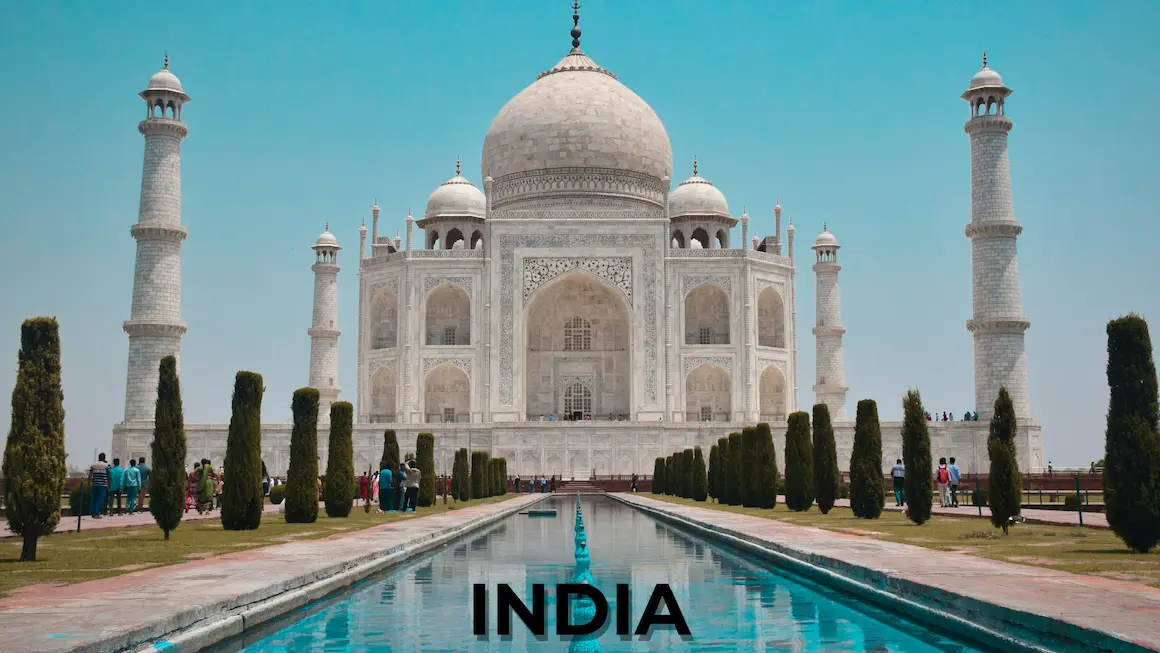
1 thought on “India with Kids: A Beginner’s Guide to Safe Family Travel”